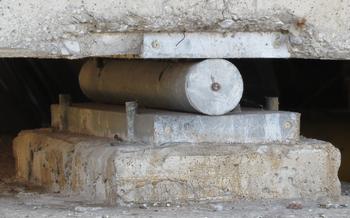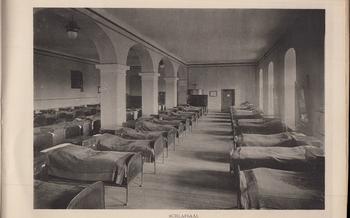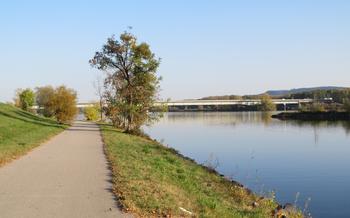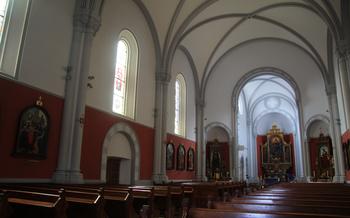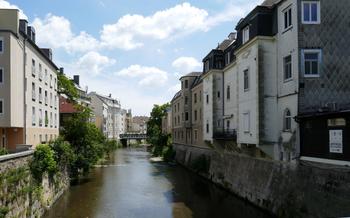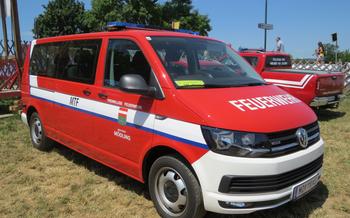
The Roman City of Carnuntum
- Archeological Discoveries: Uncovering the City's Past through Excavations
- Location and Transportation
- Heidentor (Pagan Gate): A Symbol of Resilience
- Military Museum Carnuntum: Unveiling the Roman Army
- Gladiators' Barracks: A Glimpse into Ancient Combat
- Exploring the Surrounding Area
- Dining Options near Carnuntum
- Practical Tips for Visiting Carnuntum
- Insider Tip: Off-the-Beaten-Path Gems
Archeological Discoveries: Uncovering the City's Past through Excavations
Carnuntum's buried treasures have been meticulously unearthed through decades of archaeological excavations, revealing a wealth of insights into the city's vibrant past. These excavations have brought to light the remains of impressive buildings, intricate mosaics, opulent baths, and a vast network of streets, providing glimpses into the daily lives of Carnuntum's inhabitants. Among the most notable discoveries are the gladiatorial barracks, where fierce contests once took place, and the opulent city palace, a testament to the grandeur of Carnuntum's elite.
The unearthing of artifacts, including coins, pottery, jewelry, and tools, has further enriched our understanding of Carnuntum's economy, trade, and cultural influences. These excavations have not only unveiled the physical remnants of the city but have also shed light on the complex social, political, and economic dynamics that shaped life in this ancient Roman metropolis.
Location and Transportation
Carnuntum is situated in the Austrian state of Lower Austria, approximately 35 kilometers southeast of Vienna. Its coordinates are 48°06'40"N 16°51'20"E. The ancient city is located near the modern town of Petronell-Carnuntum, which serves as a convenient base for exploring the ruins.
Reaching Carnuntum by car is straightforward. From Vienna, take the A2 motorway towards Graz and exit at Petronell-Carnuntum. Follow the signs to the Carnuntum Archaeological Park. Ample parking is available onsite.
Public transportation is also a viable option. Take the S7 train from Vienna's Hauptbahnhof station to Petronell-Carnuntum station. From there, it's a short walk to the archaeological park.
Guided tours of Carnuntum are highly recommended. Knowledgeable guides provide insights into the history and significance of the site, bringing the ancient ruins to life. Tours are available in various languages and can be booked in advance or on-site.
Allow at least half a day to explore Carnuntum thoroughly. The extensive ruins, museums, and attractions require time to appreciate fully. Plan a leisurely visit to soak in the atmosphere and immerse yourself in the history of this remarkable Roman city.
Heidentor (Pagan Gate): A Symbol of Resilience
The Heidentor (Pagan Gate) stands as a testament to the enduring legacy of Carnuntum. Constructed in the 2nd century AD, this imposing gateway marked the entrance to the civilian city, connecting it to the military camp. Its name, derived from the German word for "pagan," alludes to the gate's survival into the Christian era, when it continued to be used despite the decline of Roman paganism.
The Heidentor's architectural features are as captivating as its history. The gate's intricate carvings showcase a blend of Roman and Celtic motifs, reflecting the cultural diversity of Carnuntum. Its four-wheeled chariot, flanked by two winged victories, symbolizes the Roman Empire's military might and the city's prosperity as a trading hub.
Restoration efforts have been instrumental in preserving the Heidentor for future generations. In the 19th century, the gate underwent extensive renovations, ensuring its stability and safeguarding its remarkable carvings. These efforts have ensured that the Heidentor remains a poignant reminder of Carnuntum's past, inviting visitors to step back in time and experience the grandeur of this ancient city.
When visiting Carnuntum, don't miss the opportunity to capture the Heidentor's iconic silhouette. Its imposing structure, set against the backdrop of the surrounding ruins, makes for a striking photo that will serve as a lasting memento of your journey through this ancient Roman city.
Military Museum Carnuntum: Unveiling the Roman Army
Immerse yourself in the world of ancient Roman soldiers at the Military Museum Carnuntum. This fascinating museum showcases the equipment, tactics, and daily life of the brave men who guarded the Roman Empire's frontiers. Through engaging exhibits and interactive displays, you'll gain an intimate understanding of the Roman army's strength and resilience.
Discover the weapons and armor that Roman soldiers wielded in battle, from gleaming swords to sturdy shields. Learn about their rigorous training methods and the strategies they employed to conquer vast territories. Experience the thrill of simulating combat maneuvers and test your skills as a virtual Roman soldier.
Join a guided tour to delve deeper into the museum's collection and uncover the secrets of Roman military life. Hear captivating stories of bravery, loyalty, and sacrifice as you explore the barracks, training grounds, and other areas where soldiers once lived and trained.
Don't miss the special events and reenactments held throughout the year, where you can witness firsthand the might of the Roman army. Watch as skilled gladiators engage in fierce combat, and marvel at the precision and discipline of Roman legionaries during military demonstrations.
Gladiators' Barracks: A Glimpse into Ancient Combat
Step into the world of ancient gladiators as you explore the Gladiators' Barracks at Carnuntum. These well-preserved ruins offer a fascinating glimpse into the lives and training of the fierce warriors who once fought for the entertainment of the Roman crowds.
Uncover the history and significance of the barracks, where gladiators lived, trained, and prepared for their deadly battles. Learn about the different types of gladiators, their weapons and armor, and the rigorous training they underwent to become skilled combatants.
Explore the architectural features of the barracks, including the living quarters, training grounds, and exercise facilities. Discover the secrets of gladiator life, from their daily routines to their diet and healthcare.
Immerse yourself in the gladiatorial experience through interactive displays and exhibits. Feel the weight of replica weapons and armor, and learn about the techniques and strategies gladiators used in combat. Witness the thrill of ancient combat through immersive multimedia presentations and reenactments.
The Gladiators' Barracks offers a unique opportunity to step back in time and experience the world of these ancient warriors. Whether you're a history buff, a fan of Roman culture, or simply someone who enjoys a good adrenaline rush, this attraction is sure to leave you captivated.
Exploring the Surrounding Area
Beyond the ancient ruins of Carnuntum, the surrounding region offers a wealth of additional attractions. Petronell-Carnuntum, a charming town adjacent to the archaeological site, boasts its own Roman ruins, including the remains of a Roman villa and a Mithras temple.
Hainburg an der Donau, a short drive from Carnuntum, is home to a well-preserved medieval castle, the Burg Hainburg. Perched atop a hill overlooking the Danube River, the castle offers stunning views of the surrounding countryside. The town itself is also worth exploring, with its narrow streets, colorful buildings, and riverside promenade.
For those who enjoy cycling, the Danube Bike Trail is a must-do. This scenic trail follows the course of the Danube River, passing through picturesque towns and villages. Along the way, cyclists can admire the river's natural beauty, visit historical sites, and sample local cuisine.
Nature enthusiasts will appreciate the Nationalpark Donau-Auen, a vast floodplain located just east of Carnuntum. The park is home to a diverse array of flora and fauna, including many rare and endangered species. Visitors can explore the park on foot, by bike, or by boat, and there are numerous hiking trails and observation towers to choose from.
Dining Options near Carnuntum
After a day of exploring the ancient ruins of Carnuntum, indulge in a delightful culinary journey that blends traditional Austrian flavors with modern culinary delights.
Numerous restaurants in the vicinity of Carnuntum offer a tempting array of local dishes, showcasing the region's rich culinary heritage. Savor hearty Wiener Schnitzel, tantalize your taste buds with Käsespätzle (cheese spaetzle), or indulge in a comforting Tafelspitz (boiled beef). Pair your meal with a glass of locally produced wine from the nearby wine-growing region for an authentic Austrian experience.
For a unique glimpse into the local wine culture, visit one of the traditional Heuriger taverns. These charming establishments, often housed in historic buildings, offer a convivial atmosphere where you can sample regional wines, accompanied by platters of cold cuts, cheeses, and freshly baked bread.
If you prefer a lighter meal or a sweet treat, stop by one of the cozy cafés or bakeries in the area. Treat yourself to a slice of Sachertorte, a classic Viennese chocolate cake, or indulge in a variety of freshly baked pastries, accompanied by a steaming cup of coffee or tea.
Alternatively, pack a picnic lunch and find a secluded spot amidst the ancient ruins to enjoy a leisurely meal surrounded by history.
No matter your preference, Carnuntum offers a diverse range of dining options, ensuring that your culinary experience complements your journey through this fascinating archaeological site.
Practical Tips for Visiting Carnuntum
Comfortable footwear:
When exploring Carnuntum, comfortable footwear is essential. The ancient city's uneven terrain and cobblestone streets can be challenging to navigate, so sturdy shoes with good support are recommended.
Sun protection:
Carnuntum is a largely outdoor site, so sun protection is crucial, especially during the summer months. Visitors should bring hats, sunglasses, and sunscreen to protect themselves from the sun's harmful rays.
Accessibility:
Carnuntum is generally accessible to visitors with disabilities. However, some areas may be challenging to navigate, and wheelchairs may not be suitable for all terrains. It is advisable to inquire about wheelchair accessibility and available facilities beforehand.
Photography permits:
Photography and videography are generally permitted at Carnuntum. However, it is essential to check the regulations regarding commercial photography and videography, as permits may be required for certain types of professional work.
Insider Tip: Off-the-Beaten-Path Gems
Beyond the main attractions, Carnuntum offers hidden corners and off-the-beaten-path gems waiting to be discovered. Explore lesser-known ruins, such as the Mithras Sanctuary, a sacred site dedicated to the Roman mystery cult of Mithras. Wander through the picturesque vineyards surrounding the ancient city, where you can enjoy panoramic views and sample local wines. For a truly immersive experience, consider visiting Carnuntum during the off-season, when you can wander through the ruins in tranquility, free from the crowds of tourists. With a little exploration, you'll uncover the hidden treasures of this ancient Roman city.
